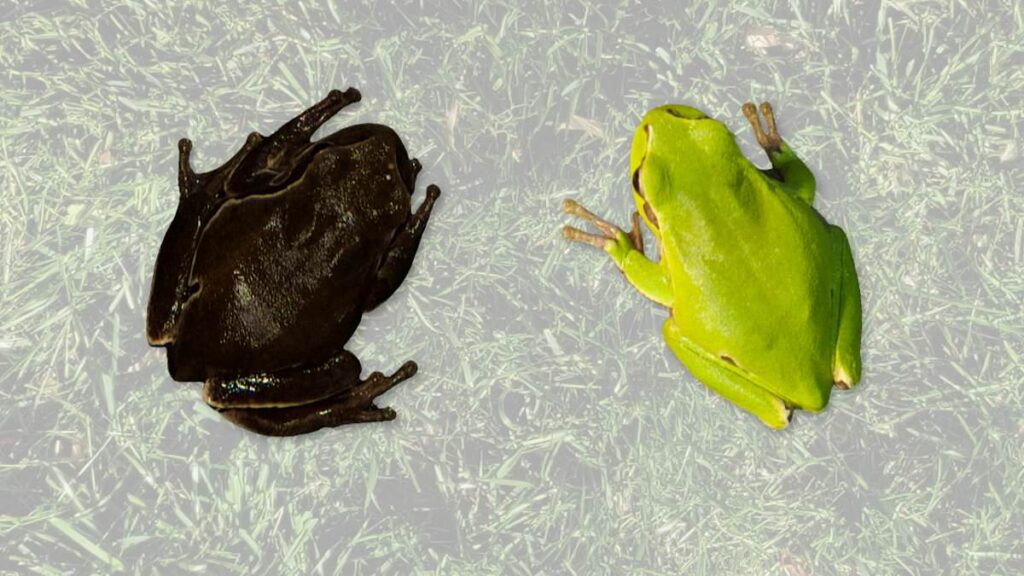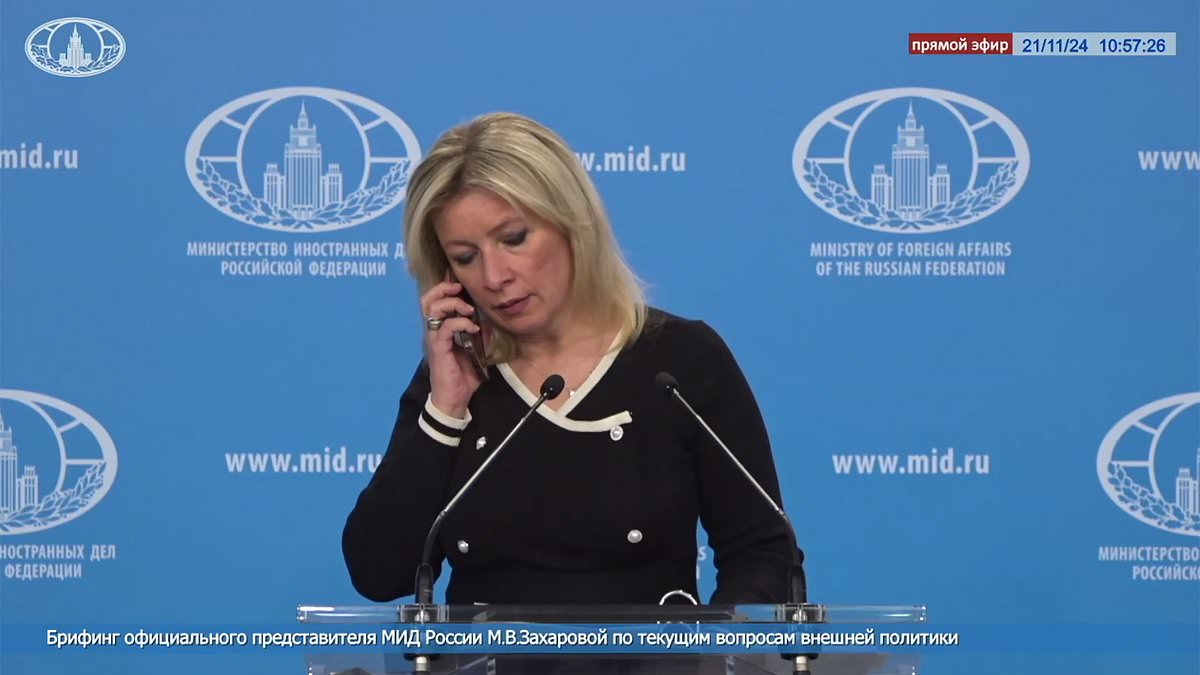Civilsation could return to the irradiated forests of Chernobyl, after scientists studying mutant black frogs in the exclusion zone made a shocking discovery.
In 1986, a meltdown at Chernobyl Nuclear Power Plant caused the the largest release of radioactive material into the environment in human history.
Eastern tree frogs living near the site in northern Ukraine were later revealed by a 2022 study to have black instead of green skin.
Now scientists studying the frogs have found that they live just as long as their green counterparts, and they don’t age faster.
That could mean the exclusion zone – 1,0000 sq miles around ground zero where access is restricted – is again fit for human habitation.
Germán Orizaola of the University of Oviedo in Spain, co-author of the new study, said: ‘There does not seem to be any difference in age between dark and normal-coloured frogs.
‘We did not find any difference in age – or ageing rate – between frogs collected across the full gradient of radioactive contamination, including localities outside the exclusion zone.
‘The message of our study is that current radiation levels experienced by tree frogs in Chernobyl do not affect their age or ageing processes.

Civilsation could return to the irradiated forests of Chernobyl, after scientists studying mutant black frogs in the exclusion zone made a shocking discovery

In 1986, a meltdown at Chernobyl Nuclear Power Plant caused the the largest release of radioactive material into the environment in human history
‘The age structure and average age that we detected in Chernobyl is similar to that from other populations of the species in eastern Europe or the Middle East.
‘It’s also similar to populations of a sister species – European tree frogs, or Hyla arborea.’
Melanin, the pigment that makes the frogs’ skin darker, protects against radiation.
But Dr Orizaola said this mutation was linked to elevated radiation levels soon after the accident, not to radiation levels now.
The frogs’ ability to live normally within the exclusion zone could therefore show that it is safe for human habitation once more.
He said: ‘We do not think that radiation is hurting these frogs now.
‘One of the main reasons should be the decay in radiation levels during the last 38 years.
‘More than 90% of the radioactive material released by the accident has already decayed and disappeared from the zone.

Eastern tree frogs living near the site in northern Ukraine were revealed by a 2022 study to have black instead of green skin

The findings could mean the exclusion zone – 1,0000 sq miles around ground zero where access is restricted – is again fit for human habitation
Wildlife thrive in the Exclusion Zone
While radiation levels in the exclusion zone are still considered too high for humans to return, wildlife has moved back into the 1,600 square mile zone.
Studies of the animals and plants in the area around Chernobyl provide clues as to what the world would be like should humans suddenly disappear.
Scientists are monitoring the health of plants and animals in the exclusion area to see how they react to chronic radiation exposure.
Cameras have captured an array of wildlife, including wolves, lynx, mouse, boars, deer, horses.
‘And the most damaging radioisotopes, 131-I for example, disappeared months after the accident.’
He continued: ‘Big areas of the exclusion zone now maintain radiation levels that are comparable to background or ‘natural’ radiation levels in many places in the world, even lower than some areas.
‘Thus, reoccupation of most of the zone by humans should be possible at anytime.
‘Having wildlife living there unaffected by constant exposure to current levels of radiation in many ways proves that these levels can be considered safe for humans.’
The exclusion zone was implemented soon after the accident by the Soviet authorities who ruled Ukraine at the time.
Most residents were evacuated and today only a few remain – mainly those who refused to leave or who secretly returned.
In the absence of human activity, biodiversity within the zone flourished.
For this reason, however, Dr Orizaola believes the zone should not be resettled – even if it is safe to do so.

In the absence of human activity, biodiversity within Chernobyl’s exclusion zone flourished
He said: ‘The value of the area as a natural laboratory for understanding the long-term effects of radiation, and as a key area for nature conservation, exceeds that of the area for human settlement.
‘The ideal situation, in my view, is to maintain the area protected from human activities – extractive ones in particular – and devote it to maintaining the memory of the accident.
‘It should be kept as a unique nature reserve.’
As part of their work, Dr Orizaola and his co-author, Pablo Burraco, captured more than 200 frogs from over a dozen different locations between 2016 and 2018.
They identified their specimens’ ages by examining the growth lines on their bones, and assessed their ageing rate by measuring their telomeres.
Telomeres are DNA sequences located at the end of chromosomes, which protect genetic material but shorten with each cell division.
Drs Burraco and Orizaola, and their colleagues from France and America, published their study in the journal Biology Letters.
WHAT HAPPENED DURING THE 1986 CHERNOBYL NUCLEAR DISASTER?
On April 26, 1986 a power station on the outskirts of Pripyat suffered a massive accident in which one of the reactors caught fire and exploded, spreading radioactive material into the surroundings.
More than 160,000 residents of the town and surrounding areas had to be evacuated and have been unable to return, leaving the former Soviet site as a radioactive ghost town.

A map of the Chernobyl exclusion zone is pictured above. The ‘ghost town’ of Pripyat sits nearby the site of the disaster
The exclusion zone, which covers a substantial area in Ukraine and some of bordering Belarus, will remain in effect for generations to come, until radiation levels fall to safe enough levels.
The region is called a ‘dead zone’ due to the extensive radiation which persists.
However, the proliferation of wildlife in the area contradicts this and many argue that the region should be given over to the animals which have become established in the area – creating a radioactive protected wildlife reserve.










